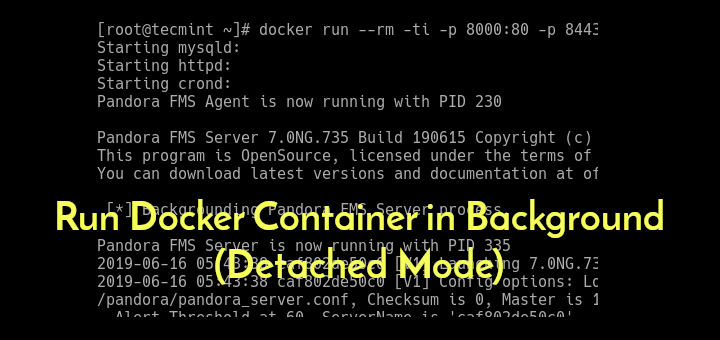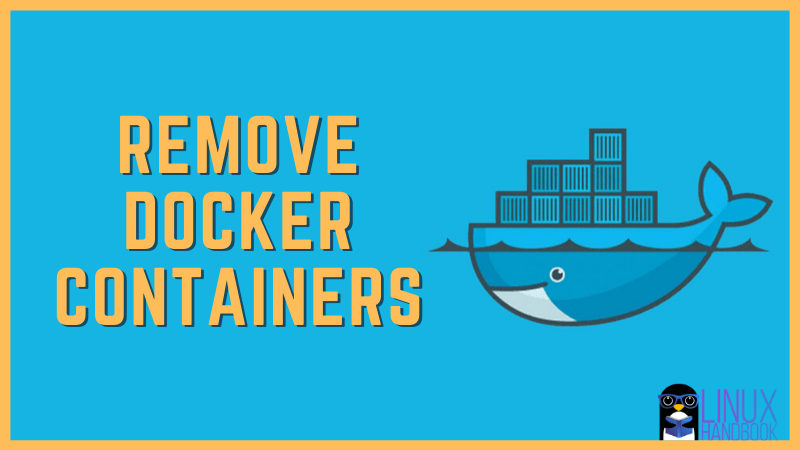

- #DOCKER REMOVE CONTAINER AND IMAGE HOW TO#
- #DOCKER REMOVE CONTAINER AND IMAGE FULL#
- #DOCKER REMOVE CONTAINER AND IMAGE DOWNLOAD#
- #DOCKER REMOVE CONTAINER AND IMAGE WINDOWS#
To display detailed information about an image, right-click it and select Inspect from the context menu. When you select an image, you can view its ID or copy it to the clipboard by clicking on the Properties tab. IntelliJ IDEA stores images that you pull or build locally and lists them in the Services tool window under Images. Select the Docker registry and specify the repository and tag (name and version of the image, for example, my-app:v2). In the Services tool window, select the image that you want to upload and click or select Push Image from the context menu.

There are other public and private Docker registries, and you can also deploy your own registry server.

Docker Hub is the default public registry with all of the most common images: various Linux flavors, database management systems, web servers, runtime environments, and so on. Images are distributed via the Docker registry. Pull pre-built images from a Docker registryįor example, you can pull an image that runs a PostgreSQL server container to test how your application will interact with your production environment.įor example, you can build an image that runs a container with the Java Runtime Environment (JRE) of some specific version to execute your Java application inside it.įor example, if you want to demonstrate to someone how your application runs in some specific version of the JRE instead of setting up the proper environment, they can run a container from your image. Depending on your development needs, you can use Docker for the following: Managing imagesĭocker images are executable packages for running containers. As with other tool windows, you can start typing the name of an image or container to highlight the matching items.
#DOCKER REMOVE CONTAINER AND IMAGE WINDOWS#
In the Services tool window ( View | Tool Windows | Services or Alt+8), you can pull and push images, create and run containers, manage Docker Compose services, and so on. To edit the Docker connection settings, select the Docker node and click on the toolbar, or select Edit Configuration from the context menu. Select the Docker node and click, or select Connect from the context menu. The configured Docker connection should appear in the Services tool window ( View | Tool Windows | Services or Alt+8). This table is not available on Linux, because when running Docker on Linux, any folder is available for volume binding. Only specified folders will be available for volume binding. The Path mappings table is used to map local folders to corresponding directories in the Docker virtual machine's file system. The Connection successful message should appear at the bottom of the dialog. For more information, see Docker configuration. The connection settings depend on your Docker version and operating system.
#DOCKER REMOVE CONTAINER AND IMAGE HOW TO#
Press Ctrl+Alt+S to open the IDE settings and select Build, Execution, Deployment | Docker.Ĭlick to add a Docker configuration and specify how to connect to the Docker daemon. Then we can verify all containers have been removed.For more information, see the Docker documentation.Ĭonfigure the Docker daemon connection settings: Let's go ahead and stop and remove this running container. Note that containers need to be stopped in order for them to be able to be removed. To remove a container, type docker rm and the container ID. Let's check to see that the container is indeed running again.
#DOCKER REMOVE CONTAINER AND IMAGE FULL#
Note that you don't need to use the full ID, but just the first few letters, as long as it has uniqueness among the other downloaded image IDs. We can start a container again by typing docker start and then the container ID. We can see all containers regardless of status by typing docker ps -a. It will remain at a stop or exited state. Just because we stopped a container, doesn't mean it no longer exists. Let's verify there are no containers running. To stop a container, type docker stop, followed by the container ID. We can check to see which containers are currently running by typing docker ps. Type control-C to stop the container, another way to run the containers is to specify the -d flag, which runs the container as a background daemon. The Docker run command will run the container in the foreground and all logs will be outputted to the terminal. If it does exist, it will pull the image right from your downloaded image cache.
#DOCKER REMOVE CONTAINER AND IMAGE DOWNLOAD#
The container will download from Docker hub if it does not currently exist on your machine. Type a simple Docker run command, followed by the name of the image you want to run, in this case, mongo. There are two ways to run Docker containers.


 0 kommentar(er)
0 kommentar(er)
